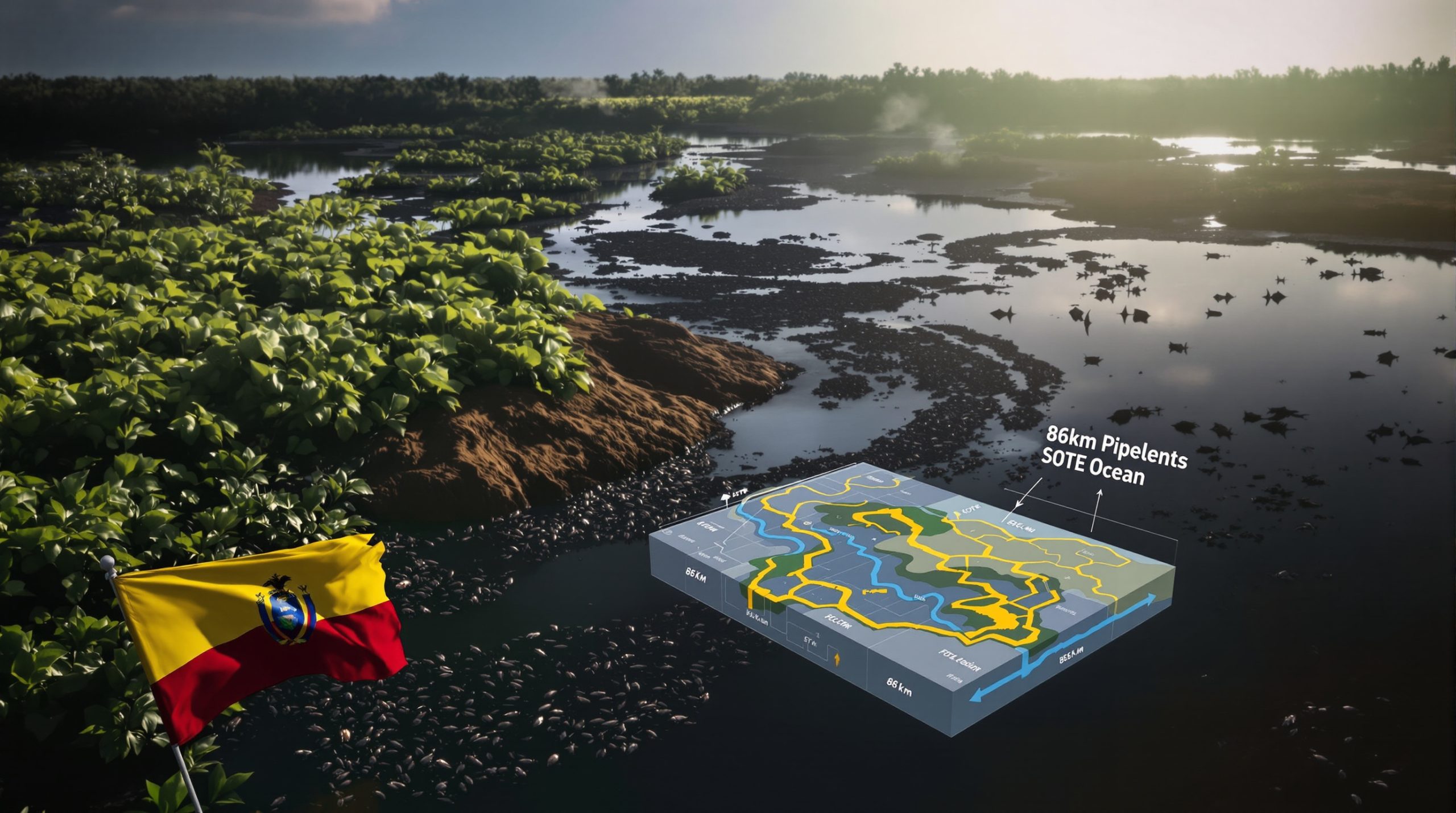What Makes the Araxá Rare Earths Discovery Significant?
St George Mining's (ASX: SGQ) Araxá project in Brazil represents a breakthrough in the global rare earths sector with its recent drilling results confirming extensive high-grade rare earth elements (REE) mineralisation. The discovery at the East Araxá target has validated thick intervals of mineralisation from surface through initial reverse circulation (RC) drilling. This carbonatite-hosted deposit is positioned to be potentially the highest-grade of its type in South America, establishing St George Mining as an emerging player in the critical minerals supply chain.
The discovery holds particular strategic value because the mineralisation begins at surface, which could significantly reduce future mining costs. Technical analysis reveals higher magnet and heavy REE grades than previously documented in the region, enhancing the project's economic potential. Additionally, the deposit offers dual-commodity potential with both rare earths and niobium, providing multiple revenue streams in future development scenarios.
Brazil's mining-friendly jurisdiction adds another layer of value to the Araxá project. The country's established mining regulations and infrastructure provide a stable environment for rare earth reserves insights and resource development, particularly important for critical minerals projects where geopolitical considerations often impact investment decisions.
The Strategic Value of the Araxá Project
The February 2025 acquisition of the Araxá project has rapidly proven to be a strategic move for St George Mining. The near-surface mineralisation significantly reduces potential mining costs, as minimal overburden removal would be required in future operations. This characteristic alone places Araxá in an advantageous position compared to deeper deposits that require extensive pre-stripping or underground development.
The higher magnet and heavy REE grades discovered at East Araxá exceed those in the existing JORC-compliant mineral resource estimate. These elements, including neodymium, praseodymium, dysprosium, and terbium, command premium prices due to their essential role in permanent magnets used in electric vehicles and renewable energy technologies.
The dual-commodity nature of the deposit further enhances its economic potential. The significant niobium content provides a valuable co-product that could substantially improve project economics. Niobium is critical in the production of high-strength, low-alloy steel and superalloys used in aerospace, automotive, and structural applications.
Brazil's established position in the global mining industry offers additional advantages. The country has well-developed infrastructure, a skilled mining workforce, and clear regulatory frameworks that reduce development risks compared to less established mining jurisdictions.
How Was the Araxá Discovery Made?
Initial Exploration Success
St George Mining's exploration strategy at Araxá began with targeted auger drilling that revealed near-surface high-grade REE mineralisation across a substantial 1,000 square meter area. This methodical approach allowed the company to identify the mineralisation footprint efficiently and cost-effectively before committing to more expensive drilling program insights.
The initial shallow drilling program provided the first indication of the deposit's potential scale and grade, with results showing consistent mineralisation from surface. This early success guided subsequent exploration efforts and highlighted the East Araxá target as a priority area for follow-up work.
The company's technical team recognized the significance of the surface anomalies, particularly their correlation with the underlying carbonatite geology that typically hosts high-grade rare earth deposits. This geological insight proved crucial in directing the exploration program toward the most prospective areas.
Follow-up Drilling Confirmation
Building on the initial success, St George implemented a systematic drilling approach that included follow-up reverse circulation (RC) drilling to test depth extensions of the surface mineralisation. The first three follow-up RC drill holes confirmed thick intervals of high-grade mineralisation from surface, substantially de-risking the project.
The company is now advancing with diamond drilling for more detailed geological understanding. Diamond core provides intact rock samples that allow geologists to study the mineralogy, structural controls, and alteration patterns that influence the distribution of rare earth elements within the deposit.
A multi-rig campaign is currently underway to accelerate resource definition at East Araxá. This approach enables simultaneous drilling at multiple locations, speeding up the data collection process and potentially shortening the timeline to resource expansion and project development.
The confirmation of mineralisation continuity at depth represents a critical milestone for the project, transforming it from a promising surface anomaly to a substantial rare earth resource with significant development potential.
What Are the Key Metrics of the Araxá Resource?
Current Resource Dimensions
The existing JORC-compliant mineral resource estimate (MRE) at Araxá stands as a foundation for the project's development potential. The rare earth elements component consists of 40.6 million tonnes at 4.13% Total Rare Earth Oxides (TREO), representing a substantial endowment of these critical materials.
The niobium component of the resource adds significant value to the project. While the existing resource already demonstrates the dual-commodity nature of the deposit, the recent discovery at East Araxá suggests potential for resource expansion and grade enhancement.
The resource's scale places it among significant rare earth deposits globally, particularly when considering its location in Brazil, a jurisdiction outside the traditional rare earth producing regions dominated by China. This positioning potentially offers supply chain diversification for Western markets seeking alternative sources of these critical minerals energy security.
East Araxá Enhancement Potential
The new discovery at East Araxá is particularly notable because of its enhanced grade profile compared to the existing resource. Technical analysis has confirmed that magnet and heavy REE grades exceed those in the existing resource, potentially improving the overall economic value of the project.
The mineralisation beginning at surface represents a significant advantage for potential mining operations. This characteristic could reduce strip ratios (the amount of waste material that must be removed to access the ore) and lower mining costs compared to deeper deposits.
The discovery area remains open for expansion in multiple directions, suggesting the current drilling has not yet defined the full extent of the mineralisation. This open-ended nature of the deposit provides substantial upside potential for future resource growth.
Resource upgrade potential has been confirmed by initial drill results interpretation, with the company's technical team confident that further drilling will add both tonnage and potentially improved grades to the existing resource base.
Why Are Rare Earths Strategically Important?
Critical Applications in Modern Technology
Rare earth elements play an essential role in numerous high-tech and clean energy applications, making them indispensable components of modern technological advancement. Their unique magnetic, luminescent, and electrochemical properties enable technologies that would otherwise be impossible to produce.
Permanent magnets represent one of the most significant applications for rare earths, particularly neodymium, praseodymium, dysprosium, and terbium. These magnets are essential components in electric vehicle motors, wind turbine generators, and various electronic devices. Their superior magnetic strength-to-weight ratio enables the miniaturization and efficiency improvements that drive modern technology.
Advanced electronics and defense critical materials strategy rely heavily on rare earth elements for components such as radar systems, guidance equipment, and communications technology. The defense industry's dependence on these materials has elevated them to strategic importance for national security considerations.
Catalysts and specialty glass manufacturing utilize rare earths for their unique chemical properties. Catalytic converters in vehicles, petroleum refining processes, and specialized glass for screens and optical applications all depend on various rare earth elements.
Energy-efficient lighting technologies, including LED bulbs and phosphors for fluorescent lighting, incorporate rare earths to produce specific color spectra and improve efficiency. These applications contribute to global energy conservation efforts by reducing electricity consumption for lighting.
Medical imaging and diagnostic equipment, including MRI machines and various medical lasers, incorporate rare earth elements for their specific electromagnetic and optical properties. These applications highlight the diverse and critical nature of rare earth elements across multiple sectors.
Supply Chain Security Concerns
The global rare earths market faces several strategic challenges that have elevated these materials to critical status for many industrialized nations. The historical concentration of processing capacity in China, which controls approximately 85% of the global processing capability, has created supply vulnerability for other nations.
Growing demand from renewable energy and electric vehicle sectors is intensifying competition for limited supplies. As nations worldwide pursue decarbonization goals, the demand for rare earths used in permanent magnets for wind turbines and electric motors continues to accelerate.
Limited production outside of a few key jurisdictions has created geographic concentration risk in the supply chain. While mining occurs in various countries, the complex processing required to separate individual rare earth elements remains concentrated in China, creating a bottleneck in the global supply chain.
The strategic importance of rare earths to defense and technology industries has prompted government intervention in many Western nations. Various initiatives aim to develop domestic or allied sources of these critical materials to reduce vulnerability to supply disruptions.
Western nations' push for supply chain diversification has created opportunities for new projects outside traditional producing regions. This trend benefits projects like Araxá, which could potentially provide alternative sources of rare earths for Western markets seeking to reduce dependence on Chinese supplies.
How Is St George Mining Positioning for Commercialization?
Strategic Alliance with REAlloys
In a significant commercial development, St George recently entered into a strategic alliance with REAlloys. This partnership represents a concrete step toward establishing market pathways for the Araxá project's future production.
The alliance aims to complete test work on REE oxalate from Araxá, evaluating its suitability for REAlloys' manufacturing processes. Successful test results could potentially secure a long-term offtake agreement, providing St George with a dedicated customer for future production.
REAlloys' established relationships with US government organizations offer potential pathways to strategic markets. These connections could be particularly valuable given the US government's focus on securing domestic and allied sources of critical minerals, including rare earth elements.
The target applications for Araxá's rare earth products include defense, aerospace, and electronics sectors—all high-value markets with stringent quality requirements. Qualifying for these applications would position St George's products at the premium end of the market.
This strategic partnership demonstrates St George's focus on developing commercial pathways alongside technical development. By advancing commercial relationships in parallel with resource definition, the company is building a more robust path to potential production.
Processing Advancement
St George Mining has made progress in downstream processing capabilities, addressing one of the most challenging aspects of rare earth element development. Initial processing of samples into oxalate form represents an important step in demonstrating the viability of extracting rare earths from the Araxá mineralisation.
The company is evaluating various processing routes for rare earth extraction, considering factors such as recovery rates, operating costs, and environmental impact. This technical work is essential for determining the optimal approach to processing the specific mineralogy found at Araxá.
Assessment of co-product recovery potential for niobium could significantly enhance project economics. The ability to efficiently recover both rare earths and niobium from the same ore would improve capital efficiency and potentially reduce operating costs compared to single-commodity operations.
Development of processing flowsheets tailored to the Araxá mineralogy is underway, with the goal of optimizing recovery while minimizing environmental impact. This customized approach recognizes that each rare earth deposit has unique characteristics that require specific processing solutions.
What's Next for the Araxá Project Development?
Ongoing Exploration Program
The current multi-rig drilling campaign includes diamond drilling focused on resource expansion of the existing mineral resource estimate. This work aims to extend the known mineralisation boundaries and potentially increase the overall resource tonnage.
RC drilling for resource definition at East Araxá is progressing in parallel, with the goal of incorporating this new discovery into an updated resource estimate. The higher grades reported at East Araxá could positively impact the overall project economics if successfully added to the resource base.
Systematic testing of additional exploration targets across the property continues, based on geological interpretations and surface sampling results. This broader exploration approach aims to identify additional mineralised zones that could further enhance the project's scale.
Metallurgical sample collection for process optimization is integrated into the drilling program, ensuring that sufficient material is available for the technical studies required to advance the project. These samples will support detailed metallurgical testing to refine processing parameters and confirm recovery assumptions.
Pathway to Production
St George Mining's development roadmap includes expanding and upgrading the mineral resource estimate to provide a solid foundation for economic studies. The current drilling program is designed to support this objective by adding tonnage and potentially improving the overall grade profile.
Advancing metallurgical test work and process design represents a critical path activity for the project. The complex nature of rare earth processing requires detailed technical work to optimize recovery methods and minimize operating costs.
Completing economic and technical studies will provide the quantitative framework for investment decisions. These studies will assess capital requirements, operating costs, and potential revenue streams to determine the project's economic viability under various market scenarios.
Securing additional strategic partnerships beyond the REAlloys alliance could provide both technical expertise and market access. Partnerships with downstream processors or end-users could strengthen the project's position in the rare earth supply chain.
Developing a clear path to production involves navigating permitting, financing, and technical challenges. St George's approach integrates these various workstreams to advance the project systematically toward development decisions.
How Does Araxá Compare to Other Global Rare Earth Projects?
Geological Advantages
The Araxá project benefits from several geological characteristics that differentiate it from other rare earth deposits globally. The carbonatite host rock typically offers higher grades of rare earth elements compared to other deposit types, potentially leading to more favorable economics.
Near-surface mineralization provides a distinct advantage for potential mining operations. Open-pit mining of near-surface deposits generally requires lower capital investment and offers greater operational flexibility compared to underground mines.
Significant niobium credits enhance the project's economic potential beyond rare earths alone. This multi-commodity nature distinguishes Araxá from single-commodity rare earth projects, potentially providing more stable economics across market cycles.
The favorable rare earth element distribution, with valuable magnet metals present in higher proportions, improves the potential value of the resource. Not all rare earth deposits contain these high-value elements in economically recoverable concentrations.
Location in an established mining district provides infrastructure advantages that can significantly reduce development costs. Access to power, water, transportation, and skilled labor reduces the capital requirements and development timeline compared to remote or greenfield locations.
Competitive Positioning
Within the global rare earths landscape, Araxá stands out for potentially being the highest-grade carbonatite-hosted REE deposit in South America. This positioning provides a competitive advantage in terms of potential operating costs and project economics.
The dual-commodity potential with both rare earths and niobium provides revenue diversification that many competing projects lack. This characteristic could reduce market risk and enhance project resilience to price fluctuations in either commodity.
Near-surface mineralization reduces potential mining costs, improving the project's cost position compared to deeper deposits. Lower stripping ratios translate directly to lower operating costs and potentially earlier positive cash flow.
Brazil's stable mining jurisdiction with established regulations offers lower political risk compared to some competing projects in less developed or less stable regions. This regulatory certainty is particularly valuable for critical minerals projects that often face heightened scrutiny.
Proximity to existing infrastructure and a skilled workforce further enhances the project's competitive position. These factors can significantly reduce both capital costs and operating risks compared to projects in remote or undeveloped regions.
What Are the Market Implications of This Discovery?
Supply Chain Diversification
The Araxá discovery contributes to global efforts to diversify rare earth supply chains beyond traditional sources. As Western nations seek to reduce dependence on dominant suppliers, new sources like Araxá could play an important role in supply chain restructuring.
The project potentially reduces dependency on traditional rare earth sources, offering an alternative supply option for markets seeking diversification. This aspect aligns with strategic initiatives in many industrialized nations to secure access to critical minerals.
Brazil's emerging position in the critical minerals sector is strengthened by discoveries like Araxá. The country's established mining industry provides a foundation for developing new resource sectors like rare earths.
The project aligns with government initiatives in many Western nations to secure strategic materials from allied or domestic sources. These policy directions create potential support mechanisms and market opportunities for new rare earth projects.
Regional processing and manufacturing opportunities could emerge from projects like Araxá, potentially stimulating industrial development beyond mining alone. Establishing rare earth processing capabilities in Brazil could further enhance the country's position in the global critical minerals value chain.
Investor Considerations
For investors monitoring the rare earths sector, the Araxá project presents early-stage exposure to a potentially significant rare earths resource. The project's development timeline coincides with projected supply deficits in critical rare earth elements, potentially offering advantageous market entry timing.
The dual-commodity potential with both rare earths and niobium provides risk mitigation through revenue diversification. This characteristic could reduce volatility in projected returns compared to single-commodity projects.
St George's strategic positioning in secure supply chain development aligns with growing investor interest in critical minerals security. This alignment with macro trends in technology materials could provide additional value beyond pure commodity exposure.
The company's management team brings mining development experience to the project, an important consideration given the technical complexities of rare earth projects. Previous experience in resource development enhances the probability of successful project execution.
A clear pathway to resource expansion and project advancement provides investors with visibility on potential value creation milestones. The ongoing drilling program and technical studies offer near-term catalysts for potential value recognition.
What Technical Challenges Must Be Addressed?
Processing Considerations
Developing the Araxá project will require addressing several technical aspects related to rare earth processing. Optimizing extraction and separation of individual rare earth elements represents one of the most significant challenges, as the complex chemistry of rare earths makes separation difficult and potentially costly.
Cost-effective processing routes for both rare earths and niobium need to be developed to maximize the value of the dual-commodity resource. Integrated processing that recovers both commodities efficiently could provide significant economic advantages.
Managing any deleterious elements in the mineralogy requires detailed metallurgical understanding and process design. Some rare earth deposits contain elements like thorium or uranium that require special handling considerations for environmental and regulatory compliance.
Scaling laboratory processes to commercial production represents a significant technical challenge for rare earth projects. The complex chemistry involved in rare earth separation means that processes that work in the laboratory may face challenges when scaled to commercial volumes.
Balancing capital efficiency with recovery optimization involves trade-offs that must be carefully evaluated. Higher recovery rates typically require more complex processing circuits with higher capital and operating costs, requiring optimization to maximize overall project returns.
Environmental and Social Factors
Sustainable development of the Araxá project will involve comprehensive environmental impact assessments to understand and mitigate potential effects. Rare earth processing in particular can involve complex chemistry that requires careful management to prevent environmental impacts.
Community engagement and social license considerations are essential for project advancement. Brazil's established mining industry provides frameworks for community engagement, but project-specific efforts will be required to ensure local support.
Water management and conservation strategies will be important technical considerations, particularly for processing operations. Efficient water use and recycling can reduce both environmental impact and operating costs.
Tailings management and waste minimization represent critical aspects of project design for modern mining operations. The processing of rare earth ores typically generates substantial tailings volumes that require proper management.
Energy efficiency and carbon footprint reduction align with global trends toward more sustainable mining practices. Optimizing energy use in processing operations can both reduce operating costs and improve environmental performance.
FAQ: St George Mining's Araxá Rare Earths Project
What rare earth elements are present at Araxá?
The Araxá deposit contains a full spectrum of rare earth elements, with particularly notable concentrations of neodymium, praseodymium, and other magnet rare earths essential for permanent magnets used in electric vehicles and renewable energy technologies. The recent discovery at East Araxá has shown higher concentrations of valuable heavy rare earths compared to the existing resource.
How does the discovery impact St George Mining's business strategy?
This discovery positions St George Mining as a potential supplier in the critical minerals supply chain, particularly for rare earths and niobium. The company is pursuing a strategy that includes resource expansion, strategic partnerships like the REAlloys alliance, and development of processing capabilities to capture more value from the resource.
What is the significance of the strategic alliance with REAlloys?
The partnership with REAlloys provides a potential pathway to market for Araxá's rare earth products, particularly in the US defense and technology sectors. Successful test work could lead to long-term offtake agreements and integration into secure supply chains, reducing market risk for the project and potentially facilitating financing for development.
When might the Araxá project move toward production?
While specific timelines haven't been disclosed, the company is advancing multiple workstreams simultaneously, including resource definition, metallurgical testing, and strategic partnerships. The current multi-rig drilling campaign suggests an accelerated approach to resource definition, which would typically precede detailed economic studies and development decisions.
What makes carbonatite-hosted rare earth deposits advantageous?
Carbonatite-hosted deposits typically offer higher grades of rare earth elements, often with favorable mineralogy for processing. They frequently occur near surface, potentially allowing for lower-cost open-pit mining methods rather than more expensive underground operations. The mineralogy of carbonatites can also result in better liberation characteristics during processing, potentially improving recoveries.
Further Exploration
Readers interested in learning more about rare earth elements and their strategic importance can explore related educational content available on the SmallCaps website, which regularly covers developments in the critical minerals sector. Understanding the specialized applications of different rare earth elements can provide insight into market dynamics and future demand trends for these essential materials.
The complex interplay between geology, processing technology, and market dynamics makes rare earth projects particularly interesting from both technical and investment perspectives. Further exploration of these aspects can provide a deeper understanding of the challenges and opportunities in this critical sector of the mining industry.
Ready to Stay Ahead of the Next Major Discovery?
Discover how investors can capitalise on significant mineral discoveries like Araxá before the broader market by visiting Discovery Alert's dedicated discoveries page, where their proprietary Discovery IQ model transforms complex exploration data into actionable investment opportunities for both short-term traders and long-term investors.




